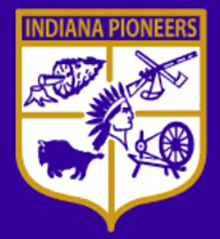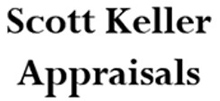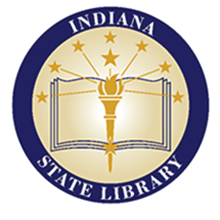Airs Saturdays, noon to 1 p.m. ET on WICR 88.7 FM.
Or stream audio live from anywhere on WICR Online!
April 02, 2022
Forgotten composer and painter from Hamilton County
After decades of being mostly forgotten, there have been recent rediscoveries, thanks to history detective work, of a symphonic music composer from Carmel and a painter from the Noblesville area who became the patriarch of a group of Hamilton County artists.


Hamilton County historian David Heighway, who reports that Hunt got his start playing various instruments in the orchestra during the 1920s at Carmel High School, when it was a small, rural school, much different than the state’s largest public high school of today.
And clarinetist, composer and producer Eric Salazar, who is director of community engagement for Classical Music Indy. Eric will discuss the significance of Hunt’s works; most of his sheet music is housed at the prestigious Eastman School of Music in Rochester, N.Y.
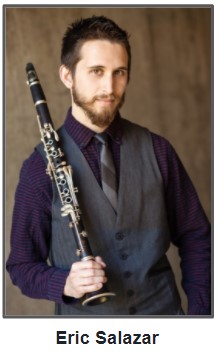 Our guest David Heighway also will share insights about Bishop (1831-1902), the painter who lived in the Noblesville area, although he moved frequently, sometimes out of state, and also briefly lived in Cicero. Bishop died in Noblesville and is buried in Riverside Cemetery there. Although searches are still underway for much of Bishop’s artwork, two of his paintings are in the collection of the Indiana State Museum.
Our guest David Heighway also will share insights about Bishop (1831-1902), the painter who lived in the Noblesville area, although he moved frequently, sometimes out of state, and also briefly lived in Cicero. Bishop died in Noblesville and is buried in Riverside Cemetery there. Although searches are still underway for much of Bishop’s artwork, two of his paintings are in the collection of the Indiana State Museum.
Another painting, a portrait of Red Cloud, a Native American leader, was commissioned during the 1890s by a fraternal lodge in Noblesville. David Heighway says the whereabouts have been unknown of the painting of Red Cloud (a leader of the Lakota tribe in the territories that became Wyoming and Montana) ever since the artwork was sold by an Indianapolis antique store about 20 years ago.
Bishop created much of his artwork after he “lost the use of his legs”, David says. Details about how Bishop dealt with his physical challenges are unclear, but he became the patriarch of a group of Hamilton County artists and illustrators that included the much better-remembered Franklin Booth (1874-1948). Booth became famous for his distinctive pen-and-ink illustrations, which are featured in books by Hoosier poet James Whitcomb Riley and novelist Theodore Dreiser, among others. Coincidentally, Booth was the uncle of Hunt, the symphonic composer.
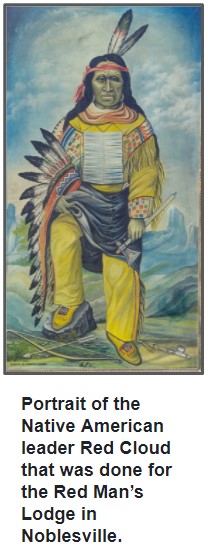 At one point, Hunt lived with his uncle in New York. He also temporarily lived with another uncle in Woodstock, N.Y., where he began his career as a composer in the 1930s, according to David’s research. In 1934, Hunt dedicated a string quartet to famous Finnish composer Jean Sibelius, who responded by saying of the work: “It is well and poetically written”.
At one point, Hunt lived with his uncle in New York. He also temporarily lived with another uncle in Woodstock, N.Y., where he began his career as a composer in the 1930s, according to David’s research. In 1934, Hunt dedicated a string quartet to famous Finnish composer Jean Sibelius, who responded by saying of the work: “It is well and poetically written”.
Some of Hunt’s music may have been performed by Indianapolis-area orchestras during the 1940s. He graduated in 1926 from Carmel High School. Although primarily known as a saxophonist, he also may have played the cornet and the oboe in the school’s orchestra. In 1925, Hunt was a charter member of the first Carmel Symphony Orchestra, according to David’s research.
Like Bishop, the artist, Hunt moved frequently, often traveling between New York and Indiana. Hunt and his wife, Nan, who died in Logansport in 1983, did not have children; the search is continuing for members of his extended family.
A search also is underway to locate paintings by Bishop. Self-taught as an artist, he periodically did landscape paintings of agricultural scenes. To supplement his income from painting, Bishop “painted decorations on wagons and drew advertising signs on buildings,” our guest David Heighway reports.
David has been a guest several times on Hoosier History Live when we have explored the heritage of Hamilton County, most recently on a show that delved into myths about the community of Strawtown.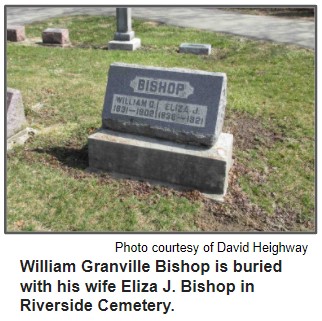
Roadtrip: A roller coaster at Mounds State Park?
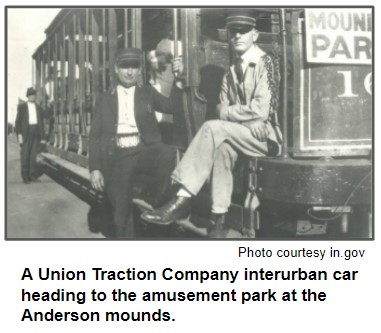 Guest Roadtripper Gary Brummitt of Anderson, an artist and a veteran broadcaster, suggests a Roadtrip to nearby Mounds State Park. Gary says that “what most people don’t know is that the park features ten ceremonial mounds built by Native Americans along the White River.” The mounds were first built by the Adena culture of indigenous peoples, and used centuries later by Hopewell culture. The largest earthwork, the Great Mound, is about 300 feet wide, and is believed to have been constructed around 160 BC. Archaeological surveys indicate the mounds were used as gathering places for religious ceremonies, from where astronomical alignments could be viewed.”
Guest Roadtripper Gary Brummitt of Anderson, an artist and a veteran broadcaster, suggests a Roadtrip to nearby Mounds State Park. Gary says that “what most people don’t know is that the park features ten ceremonial mounds built by Native Americans along the White River.” The mounds were first built by the Adena culture of indigenous peoples, and used centuries later by Hopewell culture. The largest earthwork, the Great Mound, is about 300 feet wide, and is believed to have been constructed around 160 BC. Archaeological surveys indicate the mounds were used as gathering places for religious ceremonies, from where astronomical alignments could be viewed.”
Also, from 1897,to 1929, an amusement park operated in the area that is now Mounds State Park. The Union Traction Company, interurban company headquartered in Indianapolis, had purchased the land in 1897 and began to add attractions. Visitors from Indianapolis, Ft. Wayne, and Muncie ride the interurbans to both view the mounds and ride the attractions! When the Great Depression hit in 1929, the property was sold to the Madison County Historical Society, who in turn sold it to the State of Indiana. Whew!
Hiking and canoeing are also available in the park.
Hoosier History Looks Back - Our “Hellbender” show in November 2019
Ever hear of a hellbender? How about an orange-fringed orchid? Our “Rare plants and animals in Indiana” show aired on November 16, 2019 with guests herpetologist Nate Engbrecht of the Indiana Department of Natural Resources, and botanist Michael Homoya, retired from the DNR.

“Hellbinders in the Blue” is a recently released short (and fun!) documentary about restoring the Hellbinder population in southern Indiana’s Blue River, supported in partyby Indiana Humanities as part of their Water/Ways initiative. You can also listen to the Hoosier History Live show podcast here: https://hoosierhistorylive.org/audio/2019-11-16-Rare-plants-and-animals.mp3
Would you like to suggest a topic for a Hoosier History Live show?
 We do welcome suggestions. But if you suggest a topic, you must also suggest a guest or guests who are knowledgeable, articulate, and are willing to be on the air. And include contact info for the guests. Feel free to email our host Nelson Price with your suggestions. And we do publish our direct emails in newsletter and on our website.
We do welcome suggestions. But if you suggest a topic, you must also suggest a guest or guests who are knowledgeable, articulate, and are willing to be on the air. And include contact info for the guests. Feel free to email our host Nelson Price with your suggestions. And we do publish our direct emails in newsletter and on our website.
Please also be aware that Hoosier History Live makes its own editorial decisions, much like a newspaper. We are proud of our work. Our goal is to deliver an interesting and compelling show, newsletter, and show podcast to you every week. Regardless of the challenges.
Nelson Price, host and historian
Molly Head, producer/general manager, (317) 506-7164
Ryan DeRome, associate producer
Cheryl Lamb, administrative manager
Richard Sullivan, senior tech consultant
Pam Fraizer, graphic designer
Garry Chilluffo, consultant
Please tell our sponsors that you appreciate their support!

 Acknowledgments to WICR-FM, Fraizer Designs, The Indiana Album, Monomedia, Indiana Historical Bureau, Indiana Landmarks, Henri Pensis, Kielynn Talley, Genesis Brown, Heather McIntyre, and many other individuals and organizations. We are independently produced and are self-supporting through organizational sponsorship and through individual contribution at the yellow button on our newsletter or website. For organizational sponsorship, which includes logos, links, and voiced credits in the show, contact Molly Head at (317) 506-7164 or email her at molly@hoosierhistorylive.org. Our media reach continues to grow via podcasting.
Acknowledgments to WICR-FM, Fraizer Designs, The Indiana Album, Monomedia, Indiana Historical Bureau, Indiana Landmarks, Henri Pensis, Kielynn Talley, Genesis Brown, Heather McIntyre, and many other individuals and organizations. We are independently produced and are self-supporting through organizational sponsorship and through individual contribution at the yellow button on our newsletter or website. For organizational sponsorship, which includes logos, links, and voiced credits in the show, contact Molly Head at (317) 506-7164 or email her at molly@hoosierhistorylive.org. Our media reach continues to grow via podcasting.
Thank you!
We'd like to thank the following recent individual contributors who make this show possible. For a full list of contributors over the years, visit Support the Show on our website.
- Marion Wolen
- Charles Schisla
- Jane Simon Ammeson
- Serita Borgeas
- Jill Lough Chambers
- Barbara Stillwell
- Joseph B. Young III
- Yetta Wolen
- Dr. James Madison
- Dr. William McNiece
- Michael Freeland and Sharon Butsch Freeland
© 2022 Hoosier History Live. All rights reserved.
|

